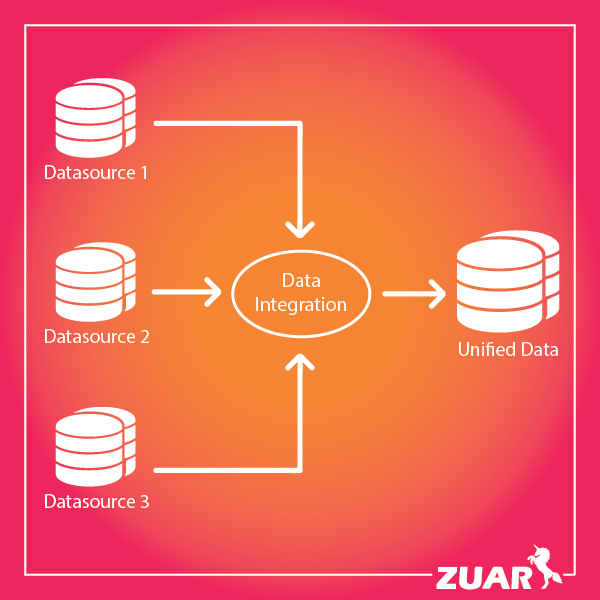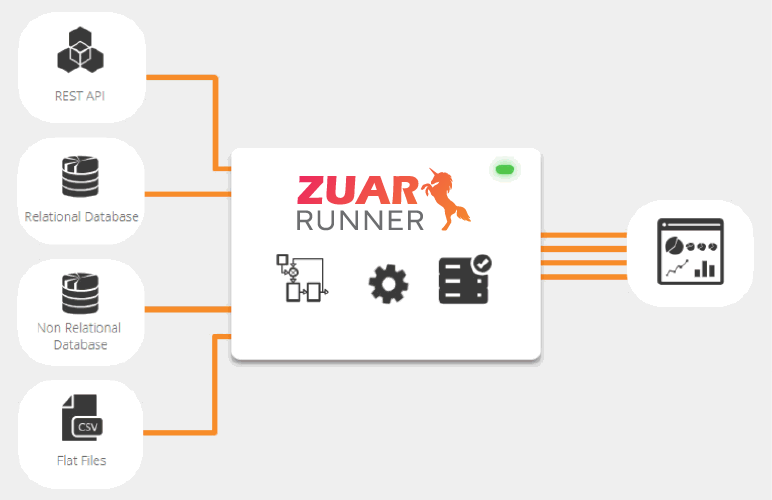What is a Data Silo?
Learn what a data silos is, how they negatively impact your business, how to identify and eliminate them, and frequently asked questions .

Contents
Overview
A data silo is a group of data that is accessible by one department but is isolated from the rest of the organization. It develops due to the different goals and priorities among teams or departments across the company. This causes a lack of transparency, efficiency, and trust within the organization. When data is siloed, companies don't have a 360-degree view of their operations. It creates friction within companies due to duplicate data, expired data, and human error which, in turn, prevents the business from functioning as expected.
Data silos are a significant obstacle to effective decision-making, which impacts business growth. Knowing exactly what silos exist, how they affect your team, and how to solve them makes a huge difference.
Watch this video to learn more about breaking down data silos:

What Causes Data Silos?
These are the three most common causes of data and information silos within an organization:
- Technology: Most organizations rely on SaaS-based applications to manage their core processes, and many of those applications don't directly integrate with one another... they're not connected to the rest of the ecosystem. Data cannot easily flow between different departments in an organization, and most of the time they don't have access to proper technology. Companies need to own high-quality applications that can handle quick transfers of information and cross-references. Also, some teams may be better trained in using the technology for data transfer than other teams, which could lead to problems in the latter being able to access the same information.
- Company growth: When organizations become too large too fast, there may be structural issues. It may require several steps for data to be passed down the hierarchy; infrastructure and processes often fail to scale. Individual departments may implement ad hoc processes to cope. This produces data assets that are usable only by the teams that created them, as well as a backlog of cleanup and data integration work for other departments.
- Organizational structures: Restrictive access control systems make it more difficult to share data, and often no one is in charge of making data shareable company-wide.
- Decentralized IT services: Sometimes organizations will have decentralized IT services, allowing departments to purchase their own software. This leads to databases, platforms, and other applications that are not compatible or connected to other systems within the organization. When IT purchases are isolated within departments or teams without checking for compatibility with existing systems, data silos can be created unintentionally.

Problems With Data Silos
- An incomprehensive view of data: With data being isolated, relevant connections between siloed data can lead to missed insights, lost opportunity, and miscommunication. Data silos also produce incomplete views of essential business information. For instance, a customer profile could be segmented across multiple data silos. It will stop you from having a 360-degree view of your business.
- A less collaborative environment: Each team ends up working independently in the presence of data silos. They only have access to their own data, so that is the only data they work with. This creates a divided organization. Teams do not collaborate with each other on projects, which makes it near impossible for the company to share a common vision.
- Wasted storage space: If data is isolated, it is duplicated across departments that need the data. This wastes data storage, and in turn, money. It would consume a lot less space if the data were streamlined onto one platform that was accessible by all employees within that organization.
- Inconsistent data: Data inconsistencies happen when the same information is stored in different places. Information is fragmented and could be updated in one place and not the other, making it skewed. The longer the isolated data sits around, the more likely that it becomes outdated and, thus, inaccurate and unusable. In addition, every team may have access to their own set of the same data.
Working with data silos results in poor-quality data because these fragmented pieces of information are difficult to assemble. If the data is not integrated or in sync, you'll surely see conflicting data when you try to cross-check the information from different sources.
- Poor experience across the end-to-end customer journey: In most businesses, there are multiple customer touch points. These interactions happen through a variety of channels and during different stages of the buyer's journey. That means that you'll have members of several teams like support, billing, sales, or marketing interacting with the same customer or buyer. When data is isolated, you can easily lose track of your customer's story with your company and the customer has to repeat their story over and over again to different people.
- Security risk: If employees are storing spreadsheets, documents, and other data on their individual devices, it increases the security risk for the company if proper security controls are not in place. Data silos also make it difficult to comply with data privacy laws since it’s complicated to track down who has access to what.

How to Identify Data Silos
In order to get rid of data silos, first we need to find them. However, since teams can technically function in silos within an organization, data silos can be difficult to detect.
Below are signs that an organization has a data silos problem:
- Complaints about lack of data for specified business initiatives
- Lack of available data illustrating a big-picture-view of the business
- Departments report inconsistent data and errors that go uncorrected
- Uncertainty about the metrics your teams/departments are using
- Inability to access data quickly
How to Eliminate Data Silos
Siloed data can be prevented and eliminated by:
- Encourage a collaborative workplace - It's important for the executives of a company to create an organization that embraces collaboration. Teams and departments should be encouraged to work together and see each other as allies, making it much easier for employees to want to share data with those outside of their teams.
- Develop new processes for storing data - In order to create a data management system that is actually usable, organizations should ensure that all the data is in its current and accurate state. So every organization should work through all the data stored and remove anything that's unnecessary our outdated, and establish processes for keeping that data current.
- Use data integration software to create centralized data - Getting rid of data silos can be done efficiently with data integration, which is the process of replicating data from databases, SaaS platforms, and other sources into a single centralized repository such as a data warehouse or a data lake. From the central repository the data can be analyzed and shared across the company. Integrating these disparate systems is the most effective way to avoid data silos. Data integration provides high-quality data that will provide staff a complete picture. An example of this software is Zuar's automated data pipeline solution Runner.

Here are some options for integration:
Create Scripts
Scripts written in SQL or Python can be used to extract data and move it to a centralized location. It is time-consuming and needs a lot of expertise. Adding a new data source to pull from can be arduous.
ETL Tools
Extract, Transform, Load (ETL) tools can help moving data by automating the whole process. This extracts data from multiple data sources, performs necessary transformations, and then loads the data into the recipient data warehouse. These tools are either hosted on the organization’s site (on-premise) or hosted in the cloud, leveraging the expertise and infrastructure offered by the vendor.
ELT Tools
Similarly to ETL tools, ELT tools also extract, transform, and load data and can be hosted on-premise or cloud-based. However, in this variation, the transform and load stages are switched. This more modern method allows allows data to be continuously revised and edited without losing any historical information. With data storage prices always dropping, this is the ideal method for most organizations (especially for organizations who are dealing with large amount of unstructured data). ELT can be implemented by piecing together a variety of tools to handle each part of the process, or with a single end-to-end ELT solution like Runner.

Next Steps
The process of identifying data silos, developing a data integration strategy to eliminate them, and implementing that strategy may feel like an insurmountable task. But there are experts that can help. Zuar not only provides an end-to-end ELT solution to break down data silos, but we provide hands-on services to help you every step of the way. Take the first step by scheduling a free data strategy assessment with a Zuar data expert!

Key Takeaways
Why would a company have a data silo?
It happens naturally due to lack of communications between departments.
What is an example of a data silo?
Example: A company's sales team and marketing team are utilizing two separate databases to access the same customer data. In this scenario, there is no single source of truth, meaning that if one record is changed in database X, that change will not be reflected in database Y.
Are data silos good?
No, data silos hold back important facts, data, and decisions from key employees. Not only does this make projects more confusing, but it can also dissuade employees from sharing valuable feedback.
How common are data silos?
Quite common- it is a frequent point of friction between different departments.
How do you avoid data silos?
- Using data integration software to create centralized data within a data lake or data warehouse
- Encouraging a collaborative workplace
- Developing new processes for storing data
Why are data silos problematic?
Data silos hinder business operations and the data analytics initiatives that support them. Silos limit the ability of executives to use data to manage business processes and make informed business decisions.




